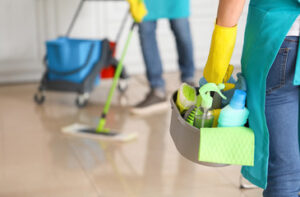Pro Window Tinting Wichita can significantly reduce the amount of UV light that enters a vehicle. It can also help preserve the interior of your car and prevent it from fading, especially if it is made from leather or vinyl.

Window tints come in a variety of shades and materials. It is essential to do your research, decide what VLT (visible light transmission) percentage you want, and have a professional installation service.
Window tint blocks the sun’s harmful ultraviolet (UV) rays. UV rays are known to cause skin cancer and other serious health issues. They also can damage materials like leather seats and dashboards over time. Window tint prevents 99% of UV rays from entering the vehicle, protecting your car’s interior and making it last longer. Window tint also helps to block the sun’s glare, making it easier to drive during high noon sunlight.
There are many different types of window tint, ranging from dark films to clear ones. The level of protection offered by each type of film depends on its composition and structure. Window tints that are made of metalized, ceramic or carbon offer the most advanced UV protection and solar control. These advanced films reduce UV rays and infrared light that penetrate the window glass while still allowing visible light into your home.
Regardless of the tint chosen for your vehicle, it’s important to find a professional installer. An experienced company will take the necessary time to ensure that the film is applied evenly and without air bubbles. Air bubbles can compromise the effectiveness of your windows’ tint, reducing their durability and performance.
While window tint is a great option for older single-pane windows, it’s not as effective on newer double-paned windows with Low-E coatings. It is recommended that homeowners look into other energy-efficient window solutions, such as replacement windows or storm doors. Tinting double-paned windows also voids the manufacturer’s warranty, so it’s best to leave this work to an experienced technician.
Reduces Heat
Window tint reduces the amount of solar radiation that passes through the windows. This helps prevent the interior of a vehicle from getting too hot, especially in the summer. This can help save on energy costs by lowering air conditioning usage. Window tint also helps insulate a vehicle or home, keeping the heat in during colder months.
The physics behind window tinting involves absorbing and reflecting the sun’s harmful UV rays and infrared (IR) rays. The film is coated with nanoparticles that effectively block the UV rays and IR rays, thereby decreasing a vehicle’s or home’s internal temperature. It also helps preserve upholstery and leather material from fading due to the sun’s damaging UV rays.
There are several types of window tint films available on the market. Their effectiveness is measured by their light transmittance percentage or VLT%, which refers to the percentage of visible light that passes through the film. The higher the VLT%, the less the tint absorbs and reflects the sunlight. Some window tints are even designed to reflect the rays back outside, allowing only a small percentage of the light in.
Window tinting is easy to apply to a vehicle or a home’s glass. After the film is cut to size, it is sprayed with water and carefully applied on the surface of the window. Then it is smoothed out with a squeegee to eliminate any unsightly bubbles. A clear adhesive layer is then used to seal the film and protect it against scratches and other damage. The film will last a long time, making it a great investment for your vehicle or home. The adhesive quality of window tints can also help hold broken glass together in an accident, preventing dangerous shards from flying around.
Increases Visibility
Depending on the tint shade chosen, window tint can increase visibility by limiting how much sunlight enters a room. It can also reduce glare on television screens and computer monitors, making them more usable. This feature can be particularly useful for offices and other public spaces.
Many window tint films reflect or absorb a portion of penetrating solar radiation, converting it to infrared energy that is blocked from entering the room. This can significantly lower a home’s energy costs and keep the interior comfortable throughout the year.
Tinted windows can also increase the durability of glass by creating a stronger bond. This means that when the glass is shattered, the shards will stay in place rather than scattering and potentially being a hazard to children or pets. This is especially important in homes that have older single-pane windows, which can be easily broken by force.
Window tints are available in a variety of shades that range from dark to clear. They can be applied to a home’s windows or to the windshield of a car. Many window tints come with a warranty to ensure their quality and longevity.
Ceramic tints, which are considered the best option, offer a massive reduction in UV rays while blocking an amazing amount of heat-producing infrared. They also have a sleek appearance and won’t interfere with radio or cell phone signals. Other options include carbon tints, which are less expensive and still effective at reducing UV protection, but not as good at reducing infrared radiation. Window tinting is a great option for any home or business, and is particularly useful in warmer climates where the sun can be intense.
Increases Privacy
A primary reason for people to tint their car windows is that window tinting increases privacy by blocking the view of passengers and belongings from passersby. This is especially useful for those who transport clients or other valuables in their vehicles, and also provides an extra level of security against vandalism and theft. Opportunist burglars are less likely to target a vehicle with contents that are easily visible from the street, and may even pass by altogether if they see no obvious reward.
Home window tinting is another way to increase the privacy of a living space. Large windows can offer a beautiful aesthetic to a property, but sunlight coming in through them can also disturb sleep, increase energy bills, damage furniture and carpeting, and rob residents of their privacy by peering into their private lives. Many homeowners opt to close their blinds in an attempt to enjoy the benefits of natural light without the negative side effects.
Window tints provide a practical and affordable solution to this problem. Tints vary in darkness and reflectivity, allowing homeowners to choose their preferred balance of privacy and visibility, as well as the level of protection against UV rays. In addition, a professional installation will ensure the tints are applied correctly and have a flawless finish. They will often also come with a warranty against bubbling, discoloration, and other issues.
For homeowners, window tinting offers a wide range of advantages that can significantly improve the quality of life in a house or apartment. Its energy efficiency, ability to block unwanted UV rays, and enhanced privacy make it a popular upgrade that boosts the value of a property and makes it more attractive to potential buyers.
Shatter Resistant
Tinted windows are a great addition to any car, as they reduce interior temperature and help protect against the sun’s harmful UV rays. They also increase the style and value of the vehicle and offer privacy for the driver and passengers. Window tint is easy to apply and there are many options to choose from. Window tints come in frosted shades to add privacy or thicker and stronger options that are made to increase security.
Shatter resistant window film adds an extra layer of safety to glass windows. It holds the glass together if it does break, so you don’t have to worry about dangerous shards falling off the window and hitting your children or pets. Window safety film is also known to deter break-ins, as it makes it much harder for thieves to enter a home or business through the windows.
The type of tint you choose will depend on your needs and the laws in your state regarding how dark the windows can be. The volume of light allowed through the windows is referred to as variable light transmission (VLT).
Factory tint, done at the time of manufacture, is darkened with a pigment during the glass manufacturing process. This type of tint doesn’t provide the UV protection or heat rejection that other window films do, but does offer decent visibility and a dark appearance.
Reflective window tint is the most popular choice because it provides both UV protection and reduced solar heat. It also has a shiny appearance and is durable and fade-resistant, but can interfere with radio signals and tire pressure monitoring systems in some cars.


